-
 Bitcoin
Bitcoin $99,594.2189
-3.59% -
 Ethereum
Ethereum $2,188.5793
-9.00% -
 Tether USDt
Tether USDt $1.0001
-0.02% -
 XRP
XRP $1.9745
-5.82% -
 BNB
BNB $608.9511
-3.73% -
 Solana
Solana $130.4575
-5.93% -
 USDC
USDC $1.0000
0.01% -
 TRON
TRON $0.2637
-3.59% -
 Dogecoin
Dogecoin $0.1493
-5.97% -
 Cardano
Cardano $0.5322
-6.72% -
 Hyperliquid
Hyperliquid $33.9044
3.33% -
 Bitcoin Cash
Bitcoin Cash $449.6411
-5.46% -
 UNUS SED LEO
UNUS SED LEO $8.9629
0.43% -
 Sui
Sui $2.3943
-8.35% -
 Chainlink
Chainlink $11.4402
-7.83% -
 Stellar
Stellar $0.2241
-6.49% -
 Avalanche
Avalanche $16.1489
-4.24% -
 Toncoin
Toncoin $2.7182
-5.94% -
 Shiba Inu
Shiba Inu $0.0...01040
-5.72% -
 Litecoin
Litecoin $78.7882
-4.07% -
 Ethena USDe
Ethena USDe $1.0004
-0.01% -
 Hedera
Hedera $0.1305
-7.45% -
 Monero
Monero $297.0030
-5.32% -
 Dai
Dai $0.9997
-0.02% -
 Polkadot
Polkadot $3.1834
-6.03% -
 Bitget Token
Bitget Token $3.9788
-7.03% -
 Uniswap
Uniswap $6.1327
-10.62% -
 Pepe
Pepe $0.0...08689
-8.30% -
 Pi
Pi $0.4826
-9.65% -
 Aave
Aave $219.8043
-9.69%
How to deal with Bollinger Bands touching the upper track but not falling back?
When the price touches the upper Bollinger Band in crypto trading, it often signals strong bullish momentum rather than an immediate reversal, especially during high volatility or trending markets.
Jun 22, 2025 at 10:57 pm
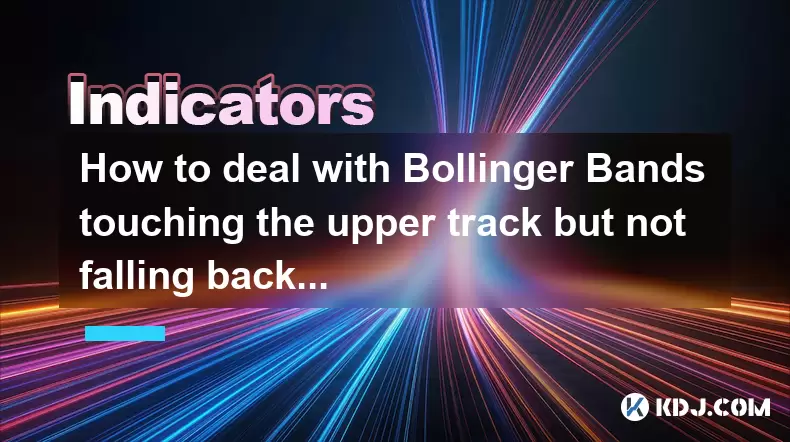
Understanding the Bollinger Bands Mechanism
Bollinger Bands are a widely used technical analysis tool in cryptocurrency trading. They consist of three lines: a simple moving average (SMA) in the middle, and two standard deviation bands above and below it. These bands dynamically adjust to price volatility, expanding during high volatility and contracting during low volatility.
In the crypto market, where prices can swing dramatically within short periods, Bollinger Bands provide crucial insights into potential overbought or oversold conditions. When the price touches the upper band, traders often interpret this as a sign that the asset may be overbought and due for a pullback. However, in strong uptrends, especially in altcoins or during bullish cycles, the price may continue to ride along the upper band without immediate reversal.
Why Prices May Touch the Upper Band Without Retreating
A touch of the upper Bollinger Band does not always indicate an imminent reversal. In fact, during strong momentum phases, prices can remain near or even slightly above the upper band for extended periods. This phenomenon is commonly observed in trending markets, particularly when there is overwhelming buying pressure.
In the context of cryptocurrencies like Bitcoin or Ethereum, this behavior can occur during news-driven rallies or macroeconomic events that trigger sudden inflows. Altcoins may also experience similar patterns during sector-specific booms or positive developments such as exchange listings or protocol upgrades.
Traders must understand that Bollinger Bands are not standalone signals but rather tools to assess volatility and relative price levels. Relying solely on a band touch can lead to premature exits or missed opportunities if the trend remains intact.
Evaluating Market Context Before Taking Action
Before reacting to a Bollinger Band upper track touch, it’s essential to evaluate the broader market environment. Is the cryptocurrency in a clear uptrend or downtrend? Are there fundamental catalysts supporting continued upward movement?
Volume plays a critical role in confirming whether the upper band touch is part of a sustainable trend or a temporary spike. High volume accompanying the move suggests stronger conviction among buyers, while low volume may hint at exhaustion or lack of interest.
Additionally, examining other indicators such as Relative Strength Index (RSI), Moving Average Convergence Divergence (MACD), or On-Balance Volume (OBV) can help validate whether the price action aligns with momentum and accumulation patterns. For instance, if RSI is rising alongside the upper band touch, it indicates strength rather than overbought territory.
Adjusting Strategy Based on Bollinger Band Behavior
When the price lingers near the upper Bollinger Band without retreating, traders should consider adjusting their strategy rather than assuming a reversal. One effective approach is to use dynamic stop-loss levels based on the middle SMA line or trailing stops to protect profits while allowing room for further upside.
Another technique involves using Bollinger Band width to gauge volatility. If the bands are expanding, it confirms increasing volatility and potentially a continuation of the trend. Conversely, if the bands start narrowing again after touching the upper boundary, it might signal an impending consolidation or reversal.
Some advanced traders also apply the "squeeze" concept, which occurs when Bollinger Bands contract tightly around the price. A breakout often follows a squeeze, and if the price breaks out upwards and stays near the upper band, it reinforces the bullish bias.
Managing Risk and Avoiding Premature Exits
One of the biggest risks in reacting to an upper Bollinger Band touch is exiting too early from a position that could still yield significant gains. Especially in fast-moving crypto markets, timing is everything.
To mitigate this risk, traders should implement partial profit-taking strategies. For example, taking off a portion of the position when the price hits the upper band while letting the rest ride can balance between locking in gains and participating in potential further moves.
It's also important to monitor support levels and previous resistance areas that have turned into support. If the price continues to hold above key moving averages like the 20-day or 50-day SMA, it suggests ongoing strength and reduces the likelihood of a sharp reversal.
Moreover, setting alerts or using automated tools to monitor real-time changes in volatility and momentum can help traders make more informed decisions without constantly watching charts.
Frequently Asked Questions
What does it mean when price hugs the upper Bollinger Band for multiple candles?
This typically indicates strong bullish momentum and sustained buying pressure. It is common during parabolic moves or strong trends in crypto assets. Traders should look for additional confirmation before considering a reversal trade.
Can I still enter a long position if the price is near the upper Bollinger Band?
Yes, especially in a confirmed uptrend. The upper band can act as a dynamic support level in strong trends. However, entering near the band requires tighter stop-loss placement and careful monitoring of momentum indicators.
Is it safe to short when the price touches the upper Bollinger Band?
Shorting based solely on a band touch is risky, especially in trending markets. Confirmation through candlestick patterns, divergences in RSI or MACD, and decreasing volume is necessary before considering a short trade.
How do I adjust Bollinger Bands for different timeframes in crypto trading?
Bollinger Bands can be applied across various timeframes. Short-term traders may use tighter settings (e.g., 12-period SMA with 1.5 standard deviations), while longer-term traders stick to the default 20-period and 2 standard deviations. Always adapt based on volatility and trend strength.
Disclaimer:info@kdj.com
The information provided is not trading advice. kdj.com does not assume any responsibility for any investments made based on the information provided in this article. Cryptocurrencies are highly volatile and it is highly recommended that you invest with caution after thorough research!
If you believe that the content used on this website infringes your copyright, please contact us immediately (info@kdj.com) and we will delete it promptly.
- Altcoins Under Pressure: Cardano and XRP Face Critical Tests
- 2025-06-23 12:25:12
- Rare Coin Fever in Wiltshire: Auctions, Errors, and Olympic Gold!
- 2025-06-23 12:25:12
- XRP Price Under Pressure: War Fears and Market Sentiment
- 2025-06-23 12:30:12
- HAI Token Private Key Leak: What Happened and How to Stay Safe
- 2025-06-23 12:45:12
- Texas Goes All In: Bitcoin Reserve Signals Big State Embrace
- 2025-06-23 12:45:12
- Pi Network's Price Plunge: Crash, Scammer Accusations, and What's Next?
- 2025-06-23 13:05:12
Related knowledge
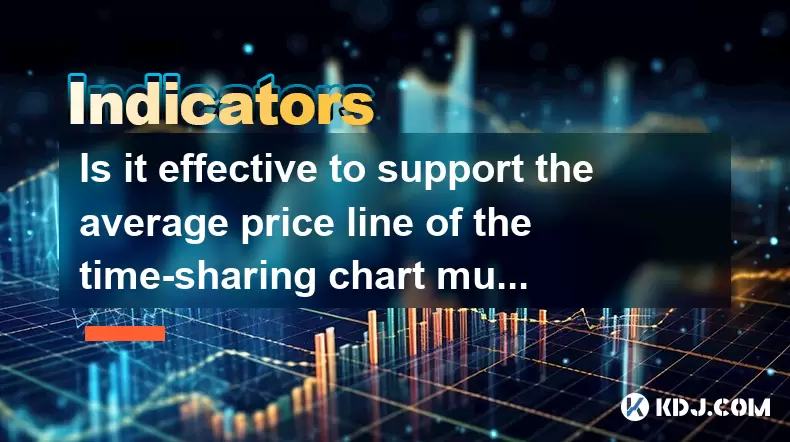
Is it effective to support the average price line of the time-sharing chart multiple times?
Jun 23,2025 at 01:36pm
Understanding the Average Price Line in Time-Sharing ChartsIn cryptocurrency trading, time-sharing charts refer to real-time price charts that display price movements over short intervals, often within a single trading day. Within these charts, the average price line, also known as the Volume Weighted Average Price (VWAP), is a commonly used technical i...
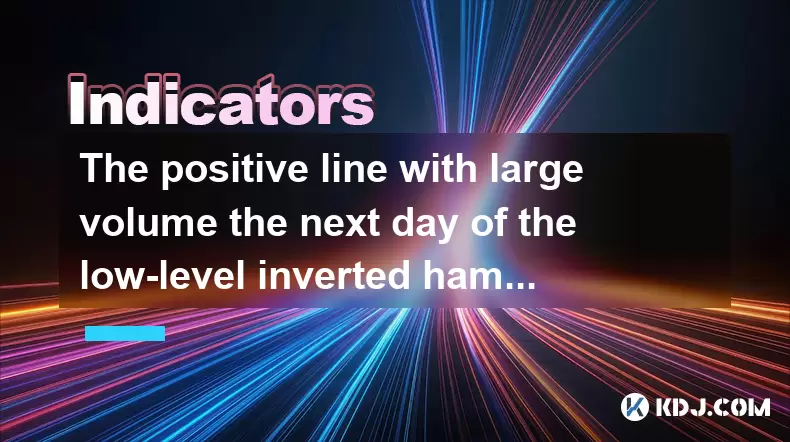
The positive line with large volume the next day of the low-level inverted hammer line confirms the reversal?
Jun 23,2025 at 01:21pm
Understanding the Low-Level Inverted Hammer LineThe inverted hammer line is a single candlestick pattern that typically appears at the end of a downtrend. It has a small real body near the bottom of the trading range and a long upper shadow, indicating that bulls attempted to push prices higher but were met with selling pressure. When this pattern forms...
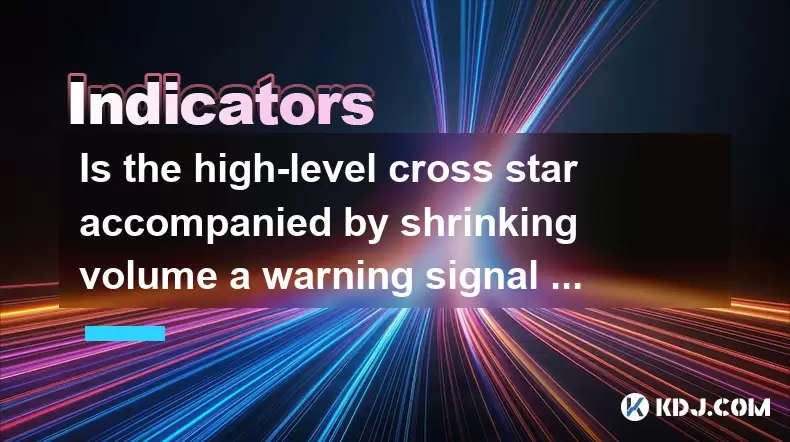
Is the high-level cross star accompanied by shrinking volume a warning signal of peaking?
Jun 23,2025 at 01:28pm
Understanding High-Level Cross Star PatternsIn the world of cryptocurrency trading, candlestick patterns are essential tools for technical analysis. One such pattern is the high-level cross star, which appears as a doji or near-doji candle at a significant resistance level. This pattern often indicates indecision in the market and can be interpreted as ...
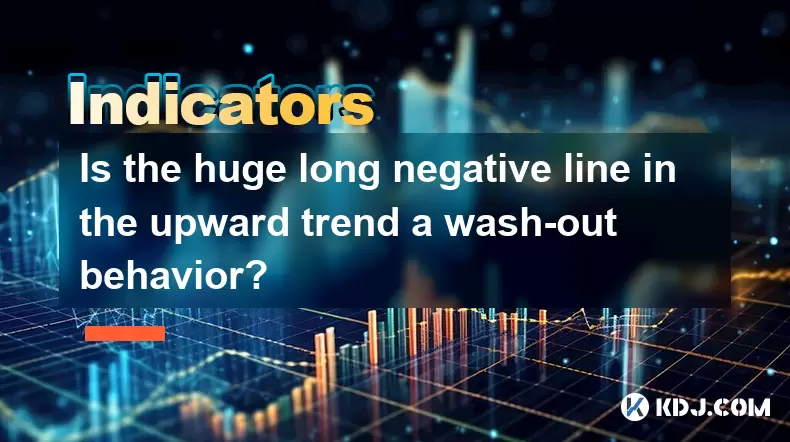
Is the huge long negative line in the upward trend a wash-out behavior?
Jun 23,2025 at 12:49pm
Understanding the Long Negative Candlestick in an Uprising TrendA long negative candlestick, often referred to as a long red or bearish candle, appearing during an upward trend can raise concerns among traders and investors. This pattern typically indicates a sudden and significant drop in price after a period of rising prices. It is often interpreted a...
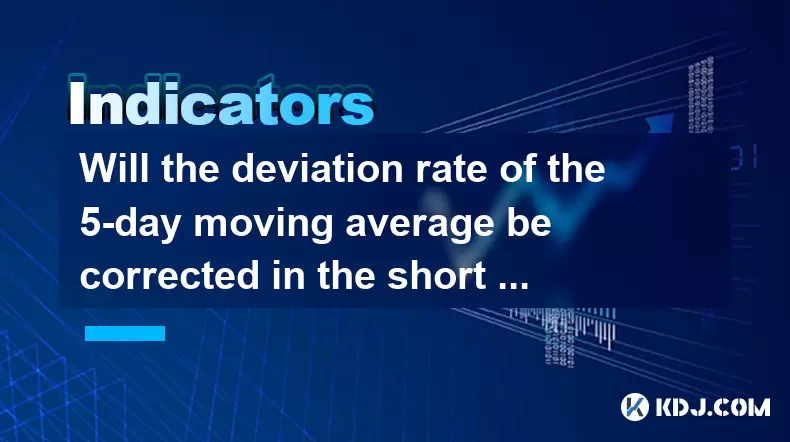
Will the deviation rate of the 5-day moving average be corrected in the short term if it is too large?
Jun 23,2025 at 02:07pm
Understanding the Deviation Rate of the 5-Day Moving AverageIn cryptocurrency trading, technical analysis plays a crucial role in evaluating price movements. One commonly used indicator is the 5-day moving average (MA), which calculates the average closing price over the past five days. The deviation rate refers to how far the current price or another m...

Can the EXPMA golden cross stand on the 5-day line at the same time?
Jun 23,2025 at 11:42am
Understanding the EXPMA Indicator in Cryptocurrency TradingThe Exponential Moving Average (EXPMA) is a popular technical analysis tool used by cryptocurrency traders to identify trends and potential reversal points. Unlike simple moving averages, the EXPMA gives more weight to recent price data, making it more responsive to current market conditions. In...

Is it effective to support the average price line of the time-sharing chart multiple times?
Jun 23,2025 at 01:36pm
Understanding the Average Price Line in Time-Sharing ChartsIn cryptocurrency trading, time-sharing charts refer to real-time price charts that display price movements over short intervals, often within a single trading day. Within these charts, the average price line, also known as the Volume Weighted Average Price (VWAP), is a commonly used technical i...

The positive line with large volume the next day of the low-level inverted hammer line confirms the reversal?
Jun 23,2025 at 01:21pm
Understanding the Low-Level Inverted Hammer LineThe inverted hammer line is a single candlestick pattern that typically appears at the end of a downtrend. It has a small real body near the bottom of the trading range and a long upper shadow, indicating that bulls attempted to push prices higher but were met with selling pressure. When this pattern forms...

Is the high-level cross star accompanied by shrinking volume a warning signal of peaking?
Jun 23,2025 at 01:28pm
Understanding High-Level Cross Star PatternsIn the world of cryptocurrency trading, candlestick patterns are essential tools for technical analysis. One such pattern is the high-level cross star, which appears as a doji or near-doji candle at a significant resistance level. This pattern often indicates indecision in the market and can be interpreted as ...

Is the huge long negative line in the upward trend a wash-out behavior?
Jun 23,2025 at 12:49pm
Understanding the Long Negative Candlestick in an Uprising TrendA long negative candlestick, often referred to as a long red or bearish candle, appearing during an upward trend can raise concerns among traders and investors. This pattern typically indicates a sudden and significant drop in price after a period of rising prices. It is often interpreted a...

Will the deviation rate of the 5-day moving average be corrected in the short term if it is too large?
Jun 23,2025 at 02:07pm
Understanding the Deviation Rate of the 5-Day Moving AverageIn cryptocurrency trading, technical analysis plays a crucial role in evaluating price movements. One commonly used indicator is the 5-day moving average (MA), which calculates the average closing price over the past five days. The deviation rate refers to how far the current price or another m...

Can the EXPMA golden cross stand on the 5-day line at the same time?
Jun 23,2025 at 11:42am
Understanding the EXPMA Indicator in Cryptocurrency TradingThe Exponential Moving Average (EXPMA) is a popular technical analysis tool used by cryptocurrency traders to identify trends and potential reversal points. Unlike simple moving averages, the EXPMA gives more weight to recent price data, making it more responsive to current market conditions. In...
See all articles

























































































